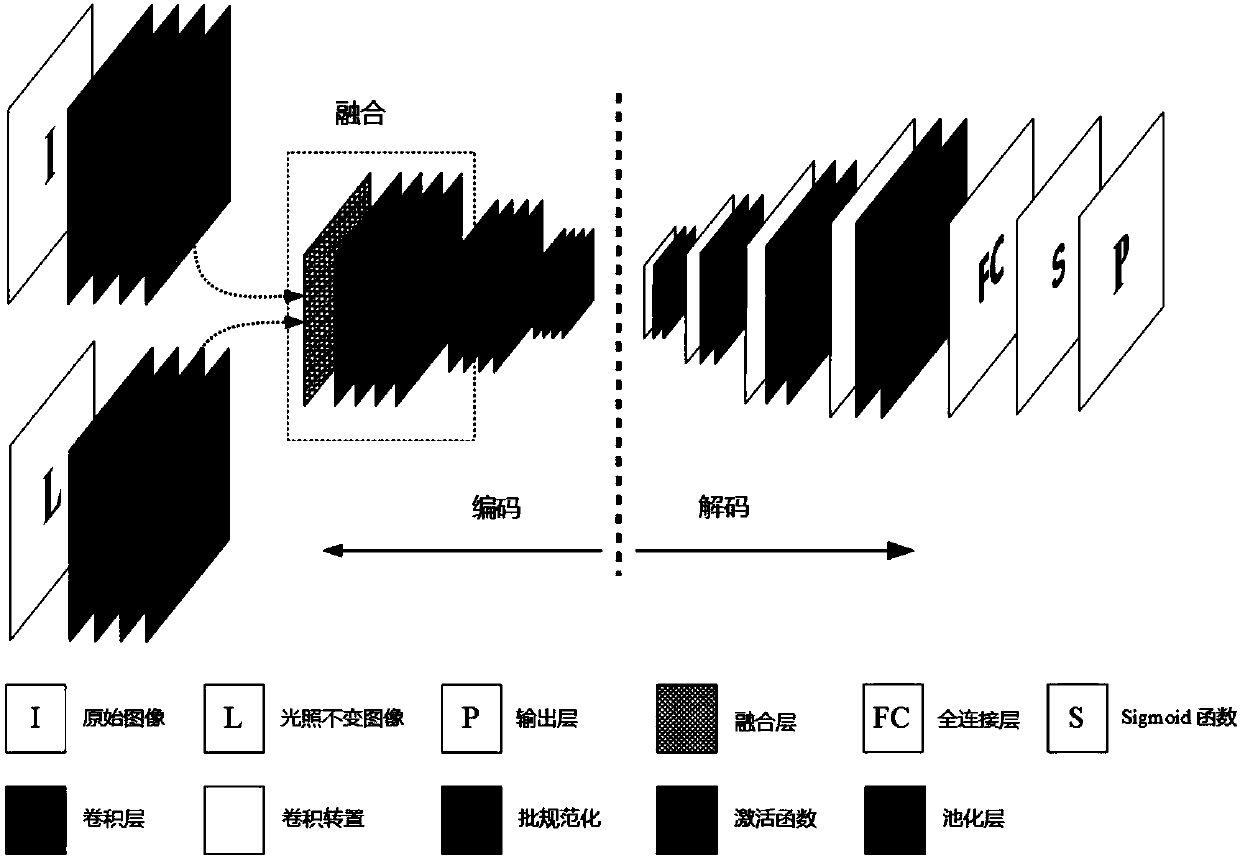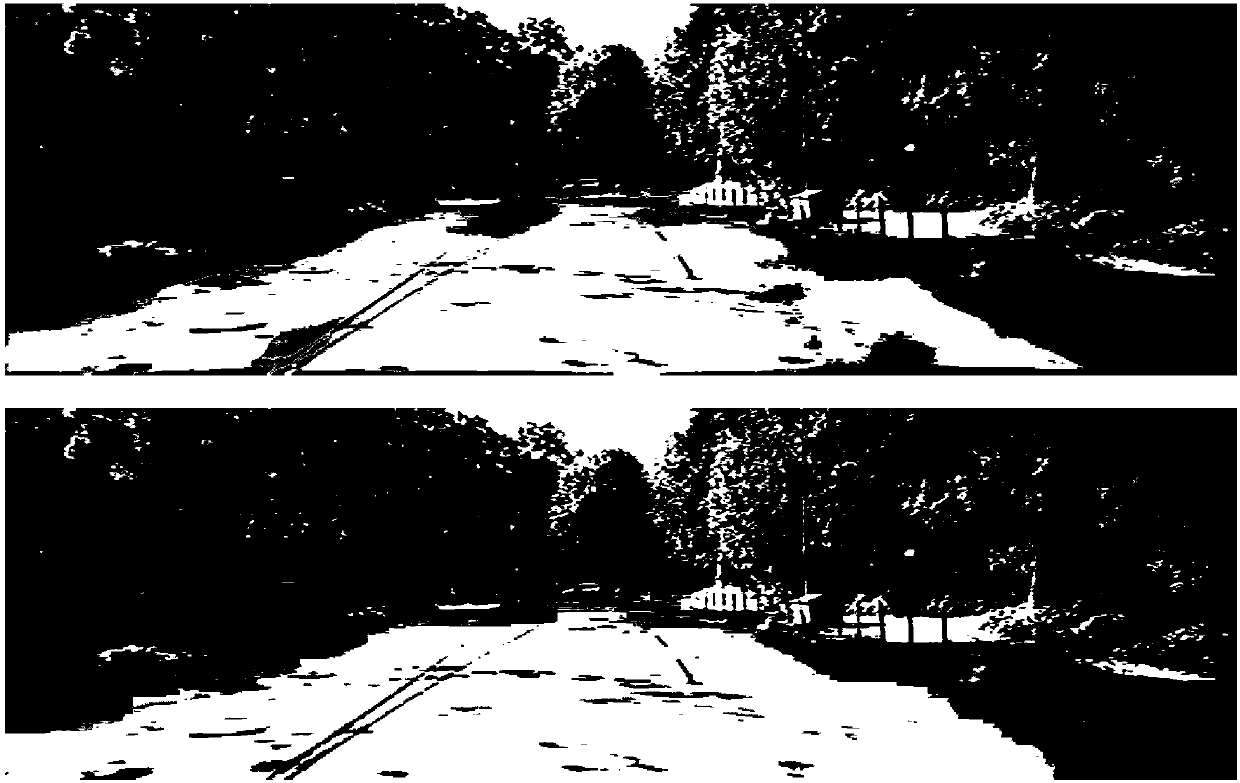Image fusion-based monocular vision road identification algorithm
A technology of road recognition and monocular vision, which is applied in the field of computer vision, can solve problems such as poor robustness, and achieve the effect of improving robustness and overcoming influence
- Summary
- Abstract
- Description
- Claims
- Application Information
AI Technical Summary
Problems solved by technology
Method used
Image
Examples
Embodiment Construction
[0036] The present invention will be further described below in conjunction with drawings and embodiments.
[0037] Embodiments of the present invention are as follows:
[0038] 1) The original image and the illumination-invariant image are processed by a convolutional neural network with two input channels, and the image information is fused during the processing to obtain the probability value that each pixel in the image is a road area;
[0039] The convolutional neural network described in 1.1) includes two parts of an encoding part and a decoding part;
[0040] The coding part of the convolutional neural network includes four layers with the same structure, and each layer includes convolution (Conv), normalization (BN), nonlinear mapping (ReLU) and pooling (Pooling), which are processed sequentially. There is a fusion layer (Concat) between the first layer and the second layer. First, the original image and the illumination-invariant image are respectively processed by t...
PUM
 Login to View More
Login to View More Abstract
Description
Claims
Application Information
 Login to View More
Login to View More - R&D
- Intellectual Property
- Life Sciences
- Materials
- Tech Scout
- Unparalleled Data Quality
- Higher Quality Content
- 60% Fewer Hallucinations
Browse by: Latest US Patents, China's latest patents, Technical Efficacy Thesaurus, Application Domain, Technology Topic, Popular Technical Reports.
© 2025 PatSnap. All rights reserved.Legal|Privacy policy|Modern Slavery Act Transparency Statement|Sitemap|About US| Contact US: help@patsnap.com



